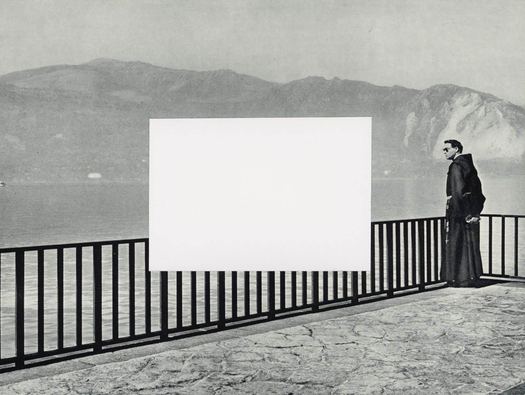
John Stezaker, Tabula Rasa II, collage, 1983. Rubell Collection, Miami
The question that inevitably returns with John Stezaker’s collages is: how does he manage to gain so much traction and resonance from such limited means? Usually one of his pieces will consist of just two found photographs, or a film still and a postcard, and put like that it may not sound like anything at all. Everything then rests on the delicacy, precision of purpose and — crucial point, this — the sensibility with which the British artist extracts these components from the infinite warehouse of dormant images and eases them into position. When the fit is right, and after 35 years of dedicated craft the fit is reliably certain, the fusion of elements has a feeling of inevitability, as though this fortuitous marriage of visual entities from a lost world has been preordained.
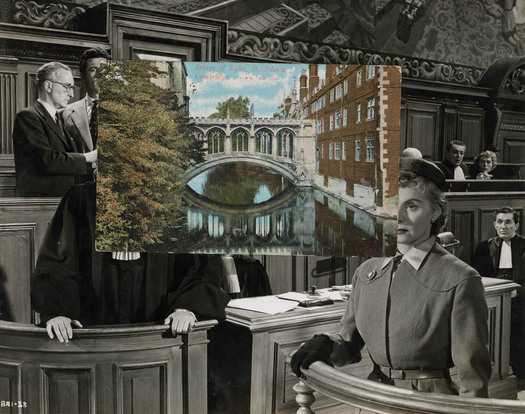 John Stezaker, The Trial, collage, 1978. Rubell Collection, Miami
John Stezaker, The Trial, collage, 1978. Rubell Collection, Miami
I was going to write about Stezaker last year at the time of his retrospective at the Whitechapel Gallery in London (also shown in St. Louis), but missed the moment. A few days ago he won the Deutsche Börse photography prize, a major award worth £30,000 ($48,000). Not every observer of the photography world was ecstatic about this: how could someone who doesn’t take pictures and cuts up other people’s work instead be eligible for a photography prize? There can be no argument, though, that Stezaker’s subject is photography — he says he works “with the medium rather than in it” — and it is right that his achievement is now receiving overdue recognition. Collage based on old photographs has returned on a grand scale in recent years. Very little of this often merely decorative image-making displays Stezaker’s consistency of vision and illuminating power.
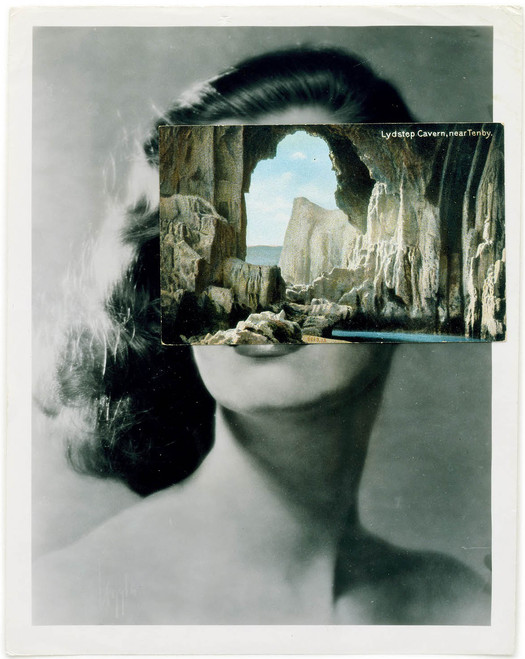
John Stezaker, Mask XXXV, collage, 2007. Collection: Bona Montagu, London
Regular readers won’t be surprised to hear that the close proximity of Stezaker’s work to Surrealism — his preoccupation with the chance encounter, the unconscious, the revelatory potential of the obsolete object and image, the uncanny and the sublime — is a key factor drawing me to his work. In the 1970s, when he was looking for his direction as an artist, conceptual art was the dominant movement and Surrealism was completely out of fashion in the art world. “Conceptualism, which represented almost the complete opposite, a rejection of the unconscious, was in the ascendant as Surrealism had become the thing of cigarette adverts, posters in adolescents’ bedrooms, or book covers, and so on,” he recalls. The example of the Belgian artist Marcel Broodthaers helped Stezaker to overcome what he terms the “taboo of Surrealism,” and a show of Joseph Cornell’s work at the Whitechapel Gallery in 1981 encouraged him to pursue his visual obsessions.
Stezaker is reputedly a reluctant interviewee — an attractive restraint in an age of loquacity and self-exposure. When he agrees to talk, his reflections on his motivations and methods are invariably fascinating. Here’s a brief collage of extracts from his interviews:
To me, montage approaches the world of photographic images as if they’re kind of particles of speech, and tries to combine them as words to make meaning. My position is the opposite, it’s about the total illegibility of images. BJPI didn’t want to be involved with the art world. I didn’t want to be involved with the currency of images in any way. I didn’t want to use images. I was interested in the obsolescence of images, the point at which they become illegible, mysterious, at which they touch on another world. Whitechapel catalogue
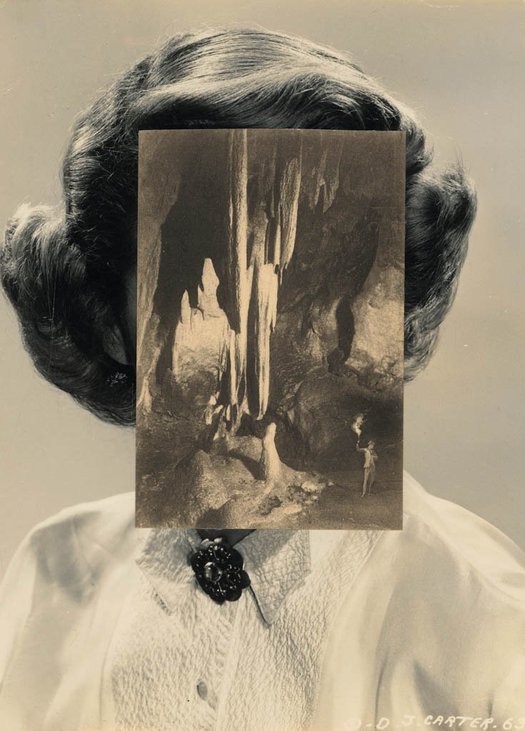
John Stezaker, Mask V, collage, 2005. Rubell Collection, Miami
Conceptualism, for me, is an integration into that flow of instrumental communications. For me it’s a disjunction from one’s conceptual relationship with things that brings about that image possibility. Frieze
The dominant assumption concerning appropriation is that artists reflect on the contemporary world they live in through the images of that world. I was not interested in the found image as an index in that way. And the big question for me was why my fascination always seemed to take me beyond the contemporary world, into something that came from the recent past but nonetheless a world that no longer exists. I felt that this relationship with old images was almost taboo. Whitechapel catalogue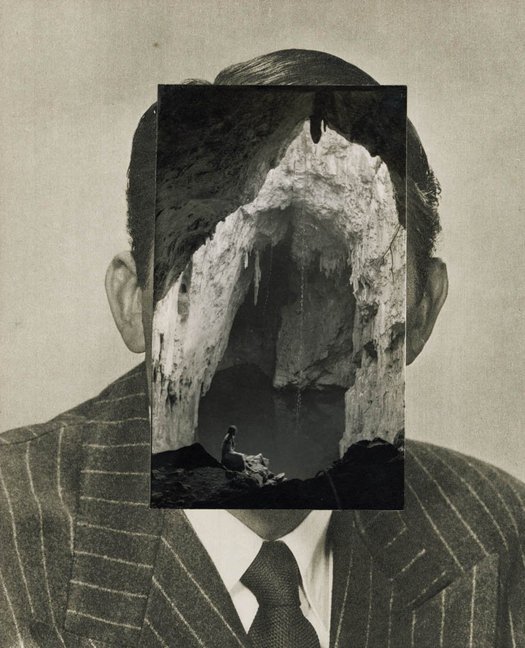
John Stezaker, Mask IV, collage, 2005. Rubell Collection, Miami
These [postcards of sea caves and natural arches] I found even more frightening as images because the punctuated space of interiority is itself extended into a space beyond. Seeing through becomes a literal seeing beyond. The dark spaces of subjectivity seem somehow blasted through, exposed and emptied out. Whitechapel catalogue
I see the cut as a decisive interruption of the flow, whether it’s the flow of cinema and the film still or image turnover and circulation. Frieze
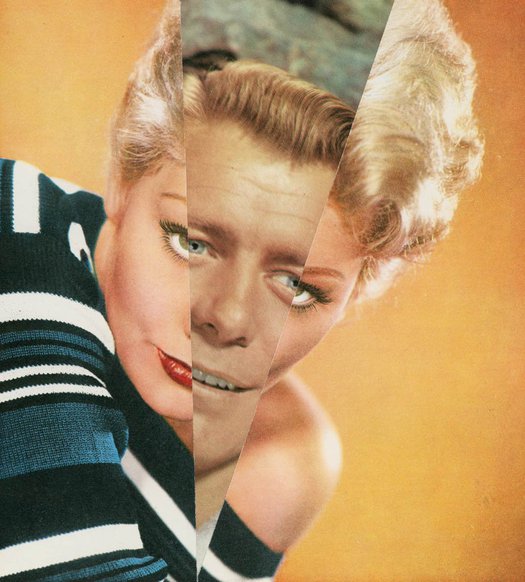
John Stezaker, Film Portrait (Incision) III, collage, 2005. Rubell Collection, Miami
How do you build a place of contemplation and of transcendence in this space of continuous movement? Frieze
I think of my retrieved images as orphans, suffering neglect and indifference in their homeless state. Thus saved from circulation, they are finally being seen for what they are, they become visible within the sanctity of the collection. Whitechapel catalogue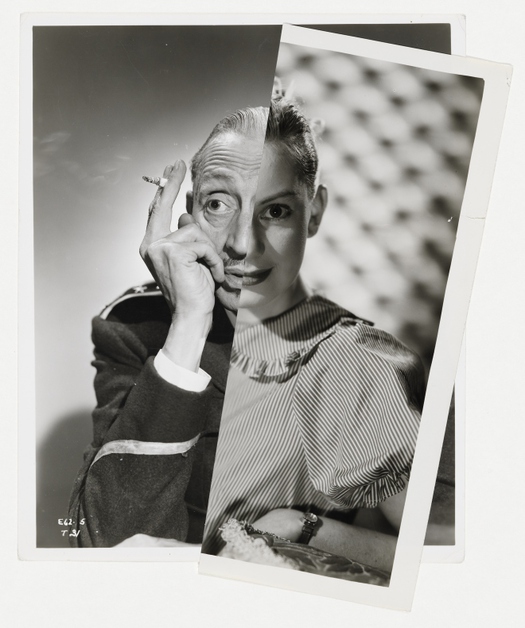
John Stezaker, Muse XVIII, collage, 2012. The Approach, London
Going into a charity shop or second hand bookshop, there are moments when I see an image and it seems like the strangest thing in the world. It’s a kind of sighting. That experience is the key thing for me, that moment when an image is showing itself not in terms of its relationship with the everyday world, its context, but showing its mysterious other aspect. BJP
I’m looking for the sublime, in many ways. And I think that the uncanny is a miniature version of that. FriezeSources:
“John Stezaker, Vandal and Thief,” interview by Diane Smyth, British Journal of Photography, 28 January 2011
“The Third Meaning,” John Stezaker in conversation with Christophe Gallois and Daniel F. Hermann in John Stezaker, Ridinghouse & Whitechapel Gallery, 2010
“Demand the Impossible,” interview by Michael Bracewell, Frieze, March 2005
See also:
The Infinite Warehouse of Images
Surrealism in the Pre-School Years


Comments [1]
Fragmentation / collages definitely seems to be in the air...
09.12.12
11:16